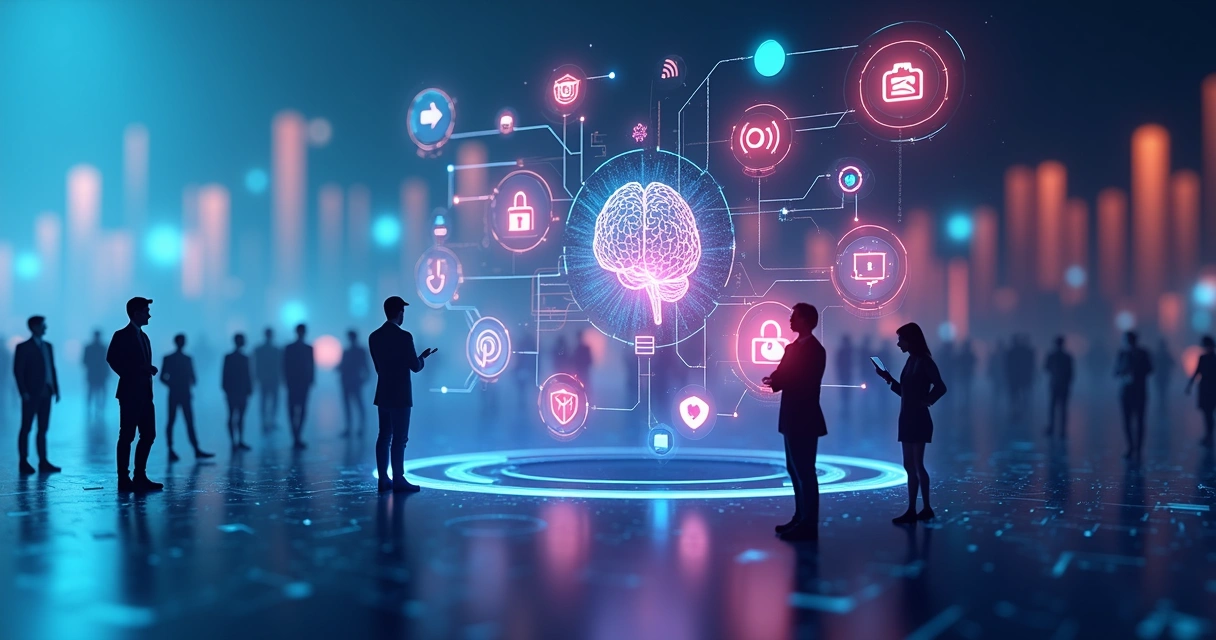Digital marketing in 2025 might feel like a moving target. Some days everything looks like it’s changed overnight. Other times, you have a sense that certain trends are whispering in your ear, hinting about the world tomorrow. No one can, or should, follow every single trend. But the ones we’ll discuss might shape how audiences experience brands, buy products, and trust companies this year and beyond.
If you run or manage a small or medium business, like many who partner with Light Internet, these shifts can be both intimidating and exciting. Looking ahead, let’s get practical: what really matters in digital marketing for 2025? And how does it all actually work for people like us?
Adapting is more than copying
There’s a temptation to add every shiny new tactic to your strategy. It almost never works. Instead, pick what fits. What matches your audience, your offering, your energy. Think people first—and tech as a tool, not a destination.
The right trend in the wrong hands is just another distraction.
Let’s dig into the 29 biggest digital marketing trends for 2025—and, maybe, see which ones actually deserve your attention.
The core theme: put users first
If there’s one thread that runs through nearly all 29 trends, it’s user experience (UX). Websites aren’t just online brochures anymore. They’re daily destinations, often the first handshake your business has with a potential customer.
- Fast loading times—nobody sticks around for delays
- Simple navigation—users shouldn’t hunt for what they want
- Mobile and voice-ready—so everyone’s included
- Clear content—not walls of text or confusing jargon
- Accessibility—new visitors, whatever their abilities or devices, can interact with ease
- Personalized journeys—the site adapts just a bit, depending on who’s visiting or where they’re coming from
Light Internet has seen businesses double user engagement just by focusing here before marketing anywhere else. It’s not magic, just empathy, design, and a bit of patience.
Meet the 29 trends changing digital marketing in 2025
- AI-powered personalizationMachine learning analyzes data, suggesting what content or products to show each person. Reports like those from IAB Spain emphasize that real-time data powered by AI is changing how brands connect in recent studies.
- Human creativity with AIAutomating the mundane, but letting humans guide the story and feel. Successful marketing mixes AI and empathy, not just algorithms as noted in this industry overview.
- Conversational marketingChatbots, messaging apps, and voice agents for direct, real-time interaction.
- Omnichannel communicationConnecting digital, social, email, chat, and sometimes phone, so it actually feels like one conversation.
- Micro-influencers riseIt’s not massive followings, it’s trust and small, engaged communities.
- Social commerceBuying happens directly inside apps like Instagram or Facebook, rather than heading to a separate shop.
- Social sellingRelationship-building, not just promotion, happens in social DMs and comments.
- Shoppable video contentClick on a video, buy the product. Seamless, often impulse-driven.
- Visual search growsUsers upload or click on photos to find products or answers, making Google and Pinterest search by image more powerful than ever.
- Story-driven contentBrands reveal their “why”—inviting audiences to share and interact, not just watch.
- Diversity in marketingCampaigns reflect the real world: race, gender, culture, body types, language. It’s about trust as much as reach.
- Accessibility mattersDesign and content that works for all, not just some.
- Immersive AR/VR experiencesTry-before-you-buy, virtual tours, and playful branded games are becoming the norm, not the exception.
- Data privacy at the coreLaws are stricter. LGPD and its siblings aren’t optional, and consumers expect respect from the brands they engage with.
- Automation blends with real peopleEmail, notifications, DMs—automated where needed, but always with a human hand at the important moments.
- Vendarketing or Smarketing—sales and marketing uniteIt’s time: marketing and sales teams finally talk to each other, share goals, and work together all the way down the funnel.
- User-generated content (UGC)Fans and users share stories, photos, or reviews. It’s less polished, far more trusted. Studies like those from Dobuss have shown younger audiences want honesty and interaction more than perfection.
- Brand transparencyPeople want to see the real people, the process, the mistakes, not just the glossy surface—according to major marketing analyses.
- Ephemeral contentStories disappear in 24 hours. It feels more human, less staged.
- Hyperlocal marketingReaching audiences based on neighborhood, not just city or country—especially for small and medium businesses.
- Voice search explodesPeople talk to phones and speakers now—and expect answers that sound human, not robotic.
- Long-form, helpful content still winsDeep guides, explainers, and accessible tutorials build authority and help SEO.
- Short-form video sticksQuick, digestible ideas, often vertical, rule social media.
- Live streaming gains groundEvents, demos, Q&A—raw and unfiltered.
- AI-powered ad targetingUnseen, but always working in the background. Ads are shown to the right viewers, in the right moment.
- Cookie-less trackingNew tracking methods required as cookies phase out, leaning into consent and first-party data.
- Purpose-driven campaignsSustainability, social impact, or clear values; businesses show what they stand for as well as what they sell.
- Responsible marketingNo tricks, no dark patterns. Just honesty and service to the audience.
- Continuous audience feedbackSurveys, polls, and forums—brands listen first, act second.
 Why user-centric approaches win
Why user-centric approaches win
Putting people first is, perhaps, a business cliché. But it’s true. You can feel the difference between a brand that listens and a brand that only speaks. Jim O’Leary’s idea of the “Experience Economy” is loud: customers want tailored, interactive, and meaningful contacts with brands according to leading experts.
- Is your content skimmable and readable?
- Do people know how to buy or contact you in just a few clicks?
- Are you present in the conversations your customers care about?
Simple is memorable. Memorable is money.
With all this complexity, companies like Light Internet help audiences and businesses connect without losing the human touch.
Integrating teams: vendarketing isn’t a fad
Marketing and sales used to live in different worlds. That’s changing. They must talk, share customer data, and create a journey that’s smooth—otherwise your potential customers, well, lose patience. Unified teams mean better stories, simpler feedback loops, and more sales. And often, a far less stressful day at the office.
 Social selling, visual content, and authentic stories
Social selling, visual content, and authentic stories
The border between marketing and commerce keeps fading. It’s now normal to buy right from a social feed, or chat directly with a brand before buying. Visual content wins attention in Google searches more and more—helping brands show, not just tell. Brands who share real stories, not only ads, are the ones people remember and follow.
Diversity, accessibility, and responsible marketing
Maybe “inclusion” and “accessibility” once felt like buzzwords, but now they are make-or-break. Diversity brings broader audiences. Accessible sites welcome shoppers others ignore. Honest, responsible marketing isn’t a trend, but a demand.
Voice search, immersive experiences, and the rise of AR/VR
Voice search now reaches groups who never used to browse online. Search phrases get longer, more casual. Augmented and virtual reality let customers touch and feel—not just see—your products or services, opening up markets and industries in ways we’re still just learning.
Transparency, privacy, and user-generated trust
Users know their data’s valuable. They want to see who you are—and how you use what they share. Show your process, your people, your setbacks. Ask for permission, explain privacy plainly, and fans might just become advocates. This is what Light Internet helps companies do best: create connection that scales, but doesn’t feel cold.
Conclusion: 2025 is about being human, not just digital
Trying to do everything usually means you end up doing nothing very well. A few of these 29 trends might fit your business, your mission, your customers. Most might not. But start with user experience. Build trust, listen, and mix new technology with a dose of humanity. If you want a partner on this journey—or just want to talk ideas—Light Internet is here to help transform those ideas into results.
Frequently asked questions
What are the biggest marketing trends for 2025?
Artificial intelligence and personalization stand out, making campaigns more relevant and timely. Other strong trends are social selling, micro-influencers, omnichannel communication, data privacy, and the blending of marketing and sales. Immersive experiences (like AR/VR), accessibility, and real user-generated content are shaping how people engage with brands.
How can I use AI in marketing?
AI can help target ads better, predict the right content to show each user, automate conversations (with chatbots), and even test which messages perform best. But it works best when combined with creative, human ideas and careful strategy.
Is influencer marketing still worth it?
Yes, but the type of influencer matters more. Micro-influencers, with smaller but engaged audiences, tend to be more trusted and effective in 2025. Authentic collaborations matter more than just reach.
What is the future of social media?
Social platforms continue to merge content, shopping, and conversation. Expect more visual content, direct buying options, and communities built around shared values or interests. Genuine two-way interaction—not just posting—will grow.
How can I boost my online sales?
Make sure your site is user-friendly, fast, and mobile-ready. Use social commerce or shoppable content where your audience spends time. Personalize offers, build trust through reviews and transparency, and use omnichannel strategies so customers can buy or ask questions easily. Sometimes, what works for you will be a mix of classic service and smart technology—something the team at Light Internet often helps clients discover.




